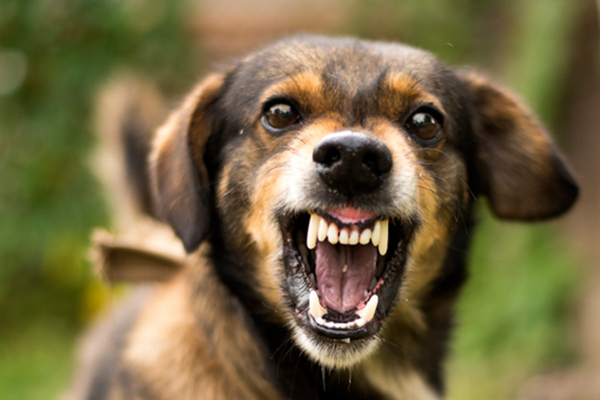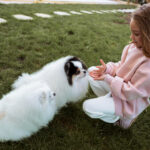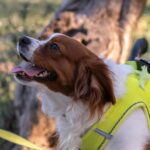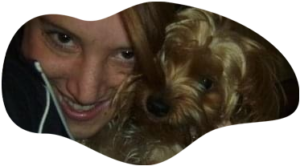Is there anything better than exploring the great outdoors with your very best and furriest friend? Every dog owner and their fluffy companion look forward to their time together each and every day. Although this might be one of the best loved elements of your time together, it doesn’t necessarily mean that each walk is going to be as smooth sailing as you’d wish that it would be. Your perfect solution to this? Investing in a quality dog harness. You might be more familiar with the slightly more traditional choice of a dog collar, however, upgrading your selection of adorable accessories really could transform your training time as well as your walks with your dog for the better now and way into the future. Here is why you should consider making the switch for a new and improved dog harness the next time you hit the dog park or pound the neighbourhood pavements with your pup by your side…

Image Credit: Stylish Hound
Keeping your dog in-check
If you’re looking to teach your dog how to behave and make appropriate adjustments to their behaviour while you’re out and about, then a dog harness is your best first step on your journey towards creating the perfect fluffy little student. A Y-shaped chest plate on a harness creates a comfortable yet secure stance that makes sure that you have control of your dog, teaching them to stay stable, calm and close to their human at all times. This reinforced nature of smooth sailing walks will set in, making for chilled out adventures for the both of you.
Minimise pulling
The minimised pulling is one of the most significant benefits of making the switch from collars to dog harnesses for your walks. The better the control, the more likely your dog will stop pulling. The secure fit across their body prohibits tugging or charging onward whenever they feel. Less pulling means that you can really treasure and enjoy the time that you have outside with your best friend. The best dog accessories maximise your quality time and create special, positive moments that you will love to look back on for years to come.
Secure the safety factor
Getting a safer walk in goes both ways! Your dog is going to experience a comfortable distribution of weight across their entire chest and back instead of a focused dose of tension right at their throats. The lack of tension is far safer for your dog’s neck should they try to pull or zip forward ahead of you in a cheeky but predictable fashion! This is going to keep your dog nice and secure no matter what happens while you are out and about. You’ll also find that the greater level of control that you experience protects your arm, back and neck from nasty strains or pulls when your dog charges ahead of you. A double dose of safety? Yes please! You can also use an escape proof harness for an extra layer of security
Go handsfree
The right dog harness can clip onto your belt or waist bag and give you handsfree flexibility for enjoying time with your dog, fully! Throw the ball, pet your dog or reach for treats with both hands. This is also fantastic if you want to hold a few training sessions whilst you’re out at the park.
Find freedom whilst saying goodbye to discomfort
The freedom, security and comfort that both of you will experience is unmatched! Look for padded handles, soft, silky and weather resistant materials as well as a secure fit to create optimum levels of comfort for you and your dog.
How to find the right dog harness…
Now that you’re schooled on some of the many benefits of investing in a dog harness, it’s time to start sniffing around for the right one! Here are the things that you need to watch out for whilst you’re looking for your dog’s perfect harness fit…
Materials: Hunt for silky smooth and ever so soft neoprene for a cosy and comfortable fit for your dog. You’re also going to want to watch out for a secure buckle, weather resistant hardware and safe joinery to make sure that your harness sticks with you and your dog through thick and thin.
Fit: Fit is essential for making the right choice for your dog, get it wrong and risk hurting them or causing more difficulty when you’re out on your walk so listen up! Measure your dog’s chest circumference to ensure that you are going to make the right and safest choice for your fluffy friend.
Style: Lastly, style. Choosing the right accessories rests on selecting your harness according to your pup’s playful personality! If they’re bold and bright go for something loud, perhaps they’re cute and cheeky? Look for energetic patterns. Maybe they’re more chill? Choose zen, calming colours like blue and green. Or maybe your pup is all business? The graphic geometric prints and plainer colour choices will work best for them!
Dog collars are useful, too!
Don’t forget that dog collars have their place in your dog accessory collection! Aside from adding some absolutely adorable personality to your dog’s looking, collars are a bit of a must for ensuring that your dog is nice and safe at all hours of the day. Your dog’s collar tag will disclose their name and your contact information which will make sure that you are always notified if the unthinkable happens and they wind up in the big wide world without you there. Your harness is best for walks, but it can be worn in combination with your dog’s collar and leash for a complete cute look that will have your dog wagging with excitement every single day!

Most of my day is spent playing with dogs. When they nap, I’m here working on my blog. You’re welcome to reach out and connect with me.
















